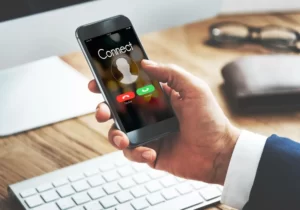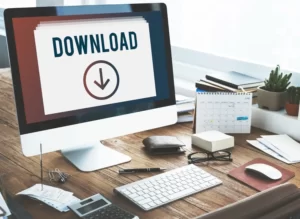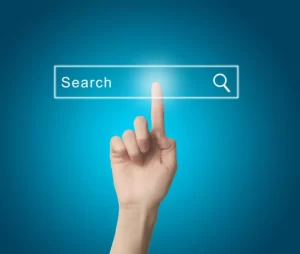If you’re a website owner or a passionate blogger, there’s nothing more frustrating than encountering a WordPress site that refuses to load.
It’s like having the perfect party planned but your guests can’t get through the front door! But worry not, as we’ve got your back.
In this comprehensive troubleshooting guide, we’ll dive deep into the common reasons why your WordPress site might not be loading and equip you with effective solutions to get it up and running in no time.
Step-by-Step Guide to Fix WordPress Site Won’t Load
Here is a guide that provides step-by-step instructions on how to resolve the issue of a WordPress site not loading.
1. Initial Checks for Quick Fix
Before diving deep, let’s try these quick fixes.
1. Check Your Internet Connection
Before diving into complex troubleshooting, it’s crucial to ensure that your internet connection is stable and functioning properly.
A weak or interrupted internet connection can lead to partial or no loading of web pages, including your WordPress site.
Check other websites and services to verify if the issue is specific to your WordPress site or if it’s a broader connectivity problem.
2. Clear Browser Cache
Browsers store temporary copies of web pages in their cache to speed up future page loads. However, sometimes cached versions can become outdated or corrupted, leading to loading issues.
Clearing your browser cache will force the browser to download the latest version of your site and might resolve the problem.
3. Try Different Browsers to Load the Site
Different web browsers handle websites and their elements differently. Try accessing your WordPress site using alternative browsers like Chrome, Firefox, Safari, or Edge.
If the site loads correctly on one browser but not on others, the problem could be browser-specific, pointing to cache or compatibility issues.
2. Maintenance Mode and URL Settings
Disable Maintenance Mode
WordPress automatically enables maintenance mode during updates to protect the site’s integrity and prevent data loss.
If your site is stuck in maintenance mode, visitors will be presented with a message like “Briefly unavailable for scheduled maintenance. Check back in a minute.”
To disable maintenance mode, you’ll need to access your website’s files either through FTP or your hosting control panel. Look for a file named .maintenance in the root directory and delete it.
Check URL Settings
WordPress settings include options for your website’s URL, both the WordPress address (URL) and the Site address (URL). If these URLs are incorrect or misconfigured, your site may not load correctly.
To verify and update them, log in to your WordPress admin dashboard, navigate to Settings > General, and ensure the WordPress Address (URL) and Site Address (URL) match your actual domain name.
3. Check Server and Hosting Related Issues
Check Server Status
Hosting providers sometimes experience downtime due to maintenance or unexpected technical issues. Visit your hosting provider’s status page or support documentation to check for any reported server problems.
If there’s a server issue, the problem is likely temporary, and you can wait for the hosting provider to resolve it.
Check Error Logs
Server error logs and WordPress debug logs can provide valuable insights into what’s causing the site not to load.
Access your server logs through your hosting control panel or FTP, and look for any error messages related to your website.
These logs might contain specific error codes or descriptions that can help you identify the issue.
Verify Database Connection
WordPress relies on a database to store its content and settings. If the database connection is interrupted or the credentials are incorrect, your site won’t load.
To check the database credentials, access your website’s wp-config.php file either through FTP or your hosting control panel. Look for the lines containing database details (DB_NAME, DB_USER, DB_PASSWORD, etc.) and ensure they are accurate.
4. Check Plugin and Theme Compatibility
Disable Plugins
Plugins add functionality to your WordPress site, but sometimes they can conflict with each other or with the WordPress core.
If your site stopped loading after installing or updating a particular plugin, it’s likely the culprit. To test this, disable all plugins at once.
If your site starts loading after disabling plugins, reactivate them one by one until you find the problematic one.
Switch to the Default Theme
Similarly, themes can also cause compatibility issues, especially if they are poorly coded or outdated. Switch to a default WordPress theme (such as Twenty Twenty-One) to see if the loading problem is theme-related.
If the issue resolves with the default theme, it indicates that your previous theme might be the cause.
5. Check File Permissions and PHP Version
Correct File Permissions
Server file permissions control access to files and folders on your website. Incorrect permissions can prevent essential files from being accessed, leading to loading issues.
Ensure that your files and directories have the correct permissions. Most hosting providers recommend setting folders to 755 and files to 644 but consult your hosting provider’s documentation or support if unsure.
Update PHP
WordPress and its themes/plugins often require specific PHP versions to function correctly. Hosting providers occasionally update PHP to newer versions, and this might cause compatibility problems with certain plugins or themes.
Check the PHP version requirements of your themes and plugins, and make sure your hosting environment meets these requirements.
6. Contact Hosting Support
If your site experiences heavy traffic or your server resources are limited, it might lead to slow loading or unresponsiveness.
Reach out to your hosting provider’s support team to inquire about resource usage. They can investigate whether the server has sufficient resources to handle your website’s needs.
7. Optimize Site Resources
Implement resource optimization techniques to enhance site performance. Caching plugins, such as WP Super Cache or W3 Total Cache, can significantly speed up your website by storing static versions of pages.
Image compression tools like Imagify or ShortPixel can help reduce image sizes without compromising quality.
Content Delivery Networks (CDNs) distribute your site’s content across multiple servers worldwide, reducing latency for visitors in different regions.
8. Look for Professional Help
If you’ve exhausted the troubleshooting steps and are still unable to resolve the loading issue, consider seeking professional help:
- WordPress Developers: Experienced WordPress developers can diagnose complex problems and provide tailored solutions to get your site back on track.
- Hosting Support: Contact your hosting provider’s support team and provide them with detailed information about the loading issue. They may be able to identify and fix server-related problems or provide guidance on resource optimization.
Conclusion
Troubleshooting a WordPress site that won’t load requires a methodical approach, starting with initial checks, followed by an examination of maintenance mode, URL settings, server, and hosting-related issues, plugin and theme compatibility, file permissions, PHP version, and resource management.
To maintain an effective and user-friendly WordPress site, it’s important to follow certain steps and seek professional help when necessary. By doing so, you can guarantee that your site is accessible and efficient, satisfying visitors and achieving its intended objectives.
Remember, regular maintenance and proactive monitoring are essential for a seamless online presence.






